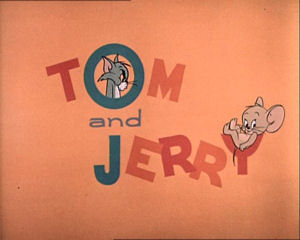After the last of the Deitch cartoons were released, Chuck Jones, who had been fired from his thirty-plus year tenure at Warner Bros. Cartoons, started his own animation studio, Sib Tower 12 Productions, with partner Les Goldman. Beginning in 1963, Jones and Goldman went on to produce 34 more Tom and Jerry shorts, all of which carried Jones' distinctive style (and a slight psychedelic influence). However, despite being animated by essentially the same artists who worked with Jones at Warners, these new shorts had varying degrees of critical success.
Jones had trouble adapting his style to Tom and Jerry's brand of humor, and a number of the cartoons favored full animation, personality and style over storyline. The characters underwent a slight change of appearance: Tom was given thicker eyebrows (resembling Jones' Grinch, Count Blood Count) or Wile E Coyote, a less complex look (including the color of his fur becoming gray), sharper ears, longer tail and furrier cheeks (resembling Jones' Claude Cat or Sylvester), while Jerry was given larger eyes and ears, a lighter brown color, and a sweeter, Porky Pig-like expression.
Some of Jones' Tom and Jerry cartoons are reminiscent of his work with Wile E. Coyote and The Road Runner, included the uses of blackout gags and gags involving characters falling from high places. Jones co-directed the majority of the shorts with layout artist Maurice Noble. The remaining shorts were directed by Abe Levitow and Ben Washam, with Tom Ray directing two shorts built around footage from earlier Tom and Jerry cartoons directed by Hanna and Barbera, and Jim Pabian directed a short with Maurice Noble. Various vocal characteristics were made by Mel Blanc and June Foray. Jones' efforts are considered superior to the previous Deitch efforts (and most cartoons made during that time, albeit visually), and contain the memorable opening theme, in which Tom is trapped inside the "O" of his name.[18]
Though Jones managed to recapture some of the magic from the original Hanna-Barbera efforts, MGM ended production on Tom and Jerry in 1967, by which time Sib Tower 12 had become MGM Animation/Visual Arts. Jones had moved on to television specials and the feature film The Phantom Tollbooth.[18]

Tidak ada komentar:
Posting Komentar